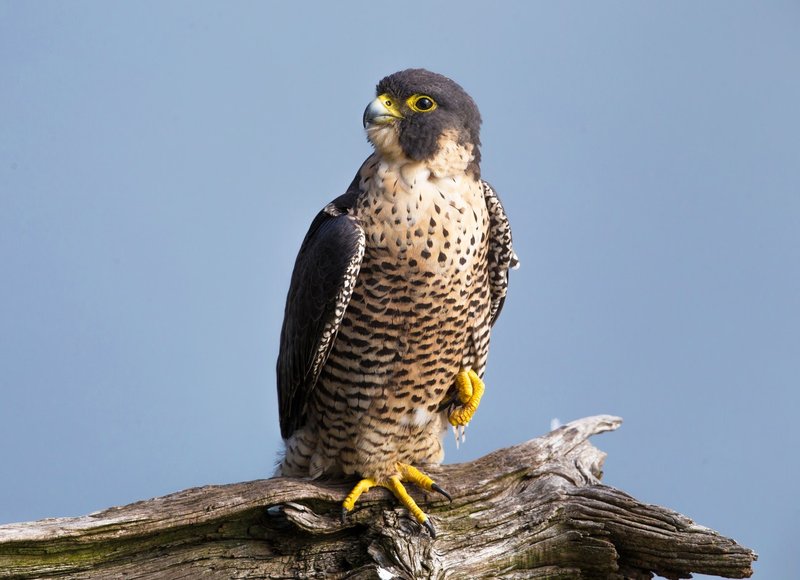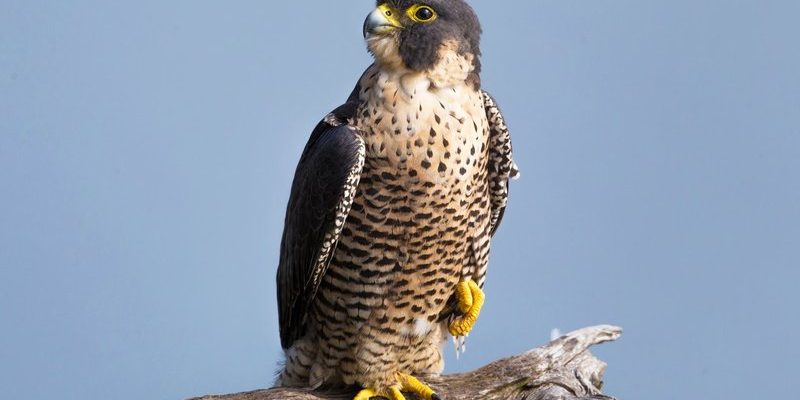
So, why should we care about the Peregrine Falcon? Honestly, these birds are indicators of a healthy environment. They thrive in areas where the air is clean, and their presence often signals that the ecosystem is thriving. Understanding their role can give us insight into the health of our own environment and even help us appreciate the intricate web of life we share with them. Let’s dive into just how these fascinating birds fit into the ecosystem puzzle.
What Makes the Peregrine Falcon Unique?
First off, let’s talk about what really sets the Peregrine Falcon apart. They are renowned for being the fastest animal on the planet, reaching speeds of over 240 miles per hour when they dive to catch their prey. Imagine a car zooming down the highway—these birds can reach that speed in a flash! This speed isn’t just for show; it’s a crucial part of their hunting technique. They often hunt birds in mid-air, and their speed allows them to surprise and capture prey with incredible efficiency.
Another unique characteristic is their excellent vision. Peregrine Falcons can spot their prey from high above, giving them a significant advantage when it comes to hunting. This sharp-eyed predator is a key player in controlling the populations of other birds, keeping the balance in their ecosystem. When you think about how prey animals interact with their environment, the presence of this majestic falcon helps ensure that no one species dominates.
The Role of Peregrine Falcons as Predators
You might be wondering how exactly these birds contribute to their ecosystem as top predators. Peregrine Falcons primarily feed on other birds, such as pigeons, ducks, and songbirds. By preying on these species, they help regulate their populations. Imagine if there were no predators; some bird populations could explode, leading to overgrazing and depletion of vegetation. In this way, the falcon acts like a natural population control agent, ensuring that various species can coexist harmoniously.
Furthermore, the falcon’s hunting habits can have wider implications for the entire ecosystem. The removal of certain birds from the food web allows plants and other organisms to thrive. This balance can influence everything from plant growth to the availability of nesting sites for other birds. Ultimately, the Peregrine Falcon’s role as a predator creates a ripple effect that maintains biodiversity, supporting a vibrant and resilient ecosystem.
The Impact of Environmental Changes on Peregrine Falcons
Like many wildlife species, Peregrine Falcons face challenges from environmental changes. Urbanization, pollution, and climate change all impact their habitats. For instance, the use of pesticides and pollutants like DDT once led to a drastic decline in their populations. The toxic effects of these chemicals caused their eggs to become thin-shelled, leading to low hatching rates. It’s a stark reminder of how human activities can inadvertently impact nature.
However, efforts to protect these birds have led to remarkable recoveries. Conservation initiatives focusing on habitat restoration and banning harmful substances have helped Peregrine Falcon numbers bounce back. This resilience showcases how interconnected we are with nature. Protecting these birds means preserving the entire ecosystem, creating a healthier environment for us all.
Breeding and Nesting Habits
When it comes to breeding, Peregrine Falcons are fascinating. They typically nest on high cliffs or tall buildings, providing a safe vantage point for their young. When the female lays her eggs, both parents share the responsibilities of incubation and later, feeding the chicks. It’s a committed partnership. Watching these falcons raise their young gives us valuable insights into their parenting behavior and social structures.
Nesting in urban areas has become increasingly common for Peregrine Falcons, especially as natural habitats diminish. Cities provide plenty of tall structures for nesting, along with abundant food sources from urban bird populations. This adaptation highlights their incredible flexibility, but it also means we need to be mindful of how urban development can impact their breeding success.
The Cultural Significance of Peregrine Falcons
Beyond their ecological importance, Peregrine Falcons hold a special place in human culture. They’ve been symbols of speed and grace throughout history, often used in falconry, a sport that dates back centuries. In many cultures, they represent freedom and the untamed spirit of nature. It’s not just their physical prowess that captivates us; it’s their mystique and the sheer thrill of watching them soar.
Conservation efforts have also sparked a renewed interest in these magnificent birds. Many organizations work to protect their habitats and raise awareness about their ecological roles. With the right support, these birds can continue to inspire future generations while playing a crucial role in the ecosystems they inhabit.
How Can We Help Protect Peregrine Falcons?
You might be thinking, “What can I do to help?” Every small action counts. Here are some ways you can contribute:
- Support conservation organizations: Many groups focus on protecting Peregrine Falcons and their habitats.
- Advocate for clean environments: Reducing the use of harmful chemicals in your area helps protect all wildlife.
- Educate others: Share what you learn about these falcons and their importance to ecosystems.
By making informed choices, we can all play a part in ensuring a future where Peregrine Falcons, and the ecosystems they support, thrive.
In conclusion, the Peregrine Falcon is not just a speedy predator; it plays a vital role in keeping our ecosystems balanced and healthy. Understanding their importance helps us appreciate our connection to wildlife and the environment. By protecting these incredible birds, we take steps towards preserving the rich tapestry of life we share with them. So next time you see a falcon soaring through the sky, remember—they’re not just birds; they’re crucial players in the game of life on Earth.

